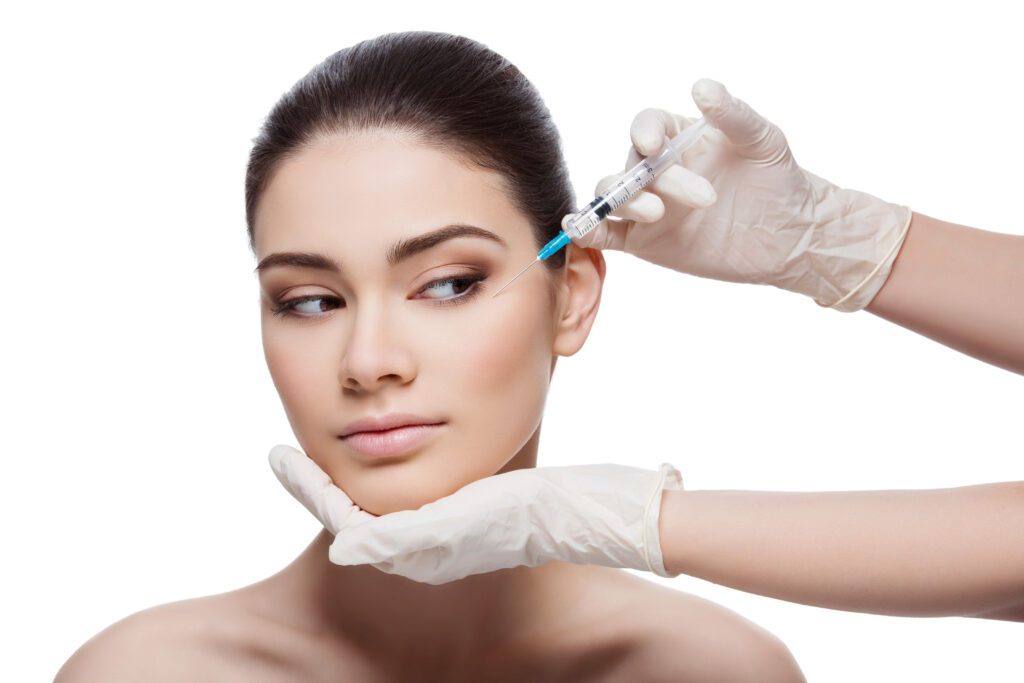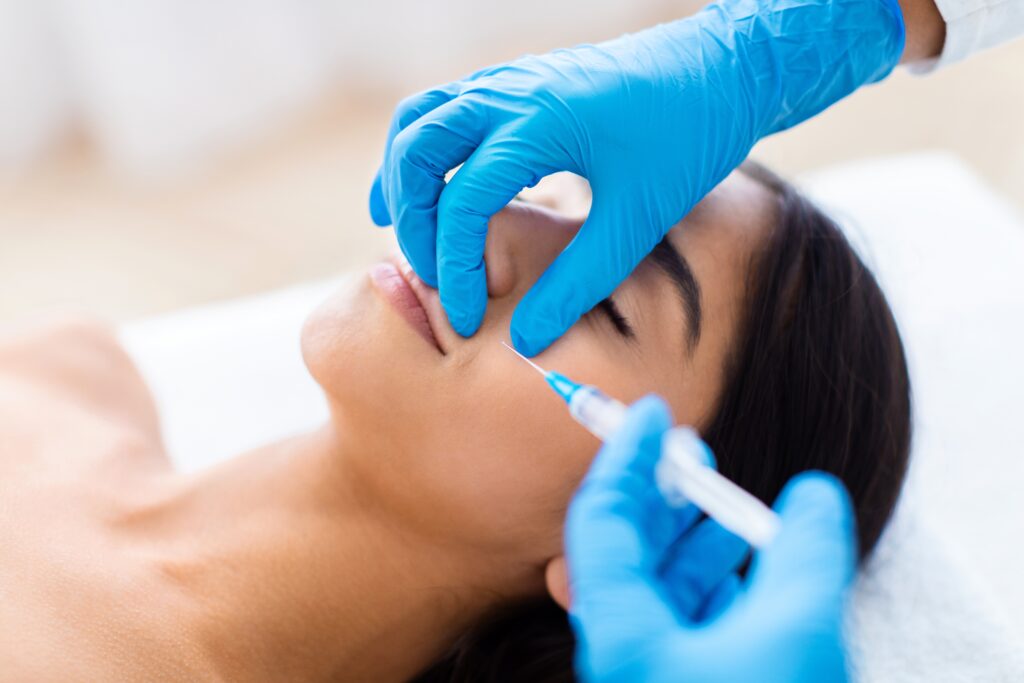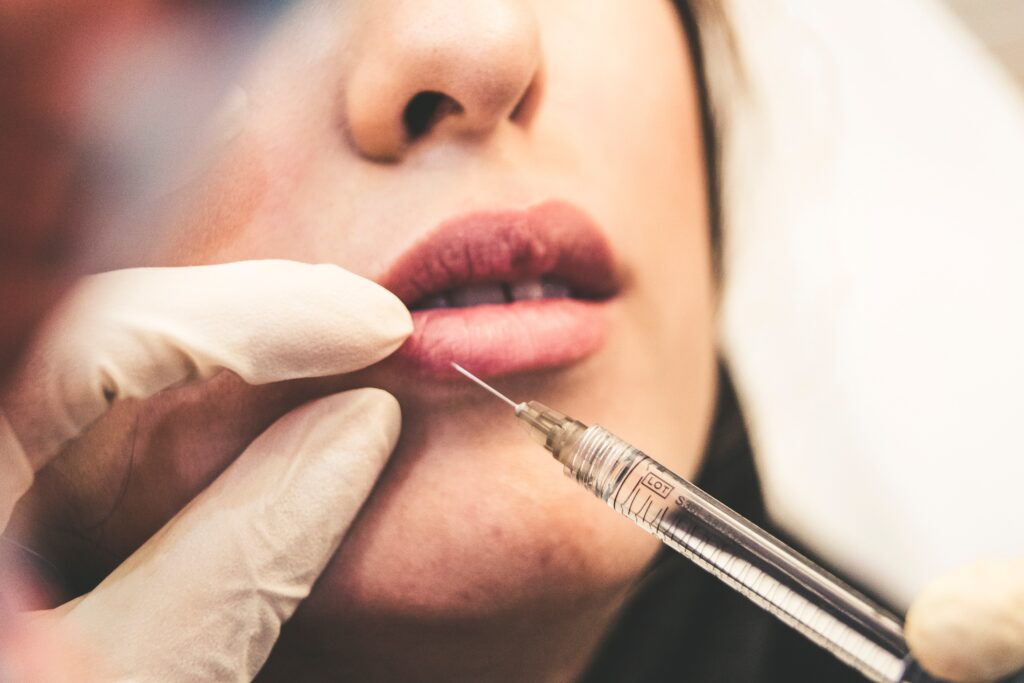When it comes to non-surgical cosmetic procedures, Botox® might be the best-known and most-loved treatment.
And it is certainly one of the most popular, with medical professionals performing more than 4 million Botox® procedures annually, according to the American Society of Plastic Surgeons. Despite this incredible success, many first-time patients still wonder, “Is Botox® safe?”
Botox® is more than just an effective way to eliminate fine lines and wrinkles around the face, it is also one of the safest treatments. In fact, the U.S. Food and Drug Administration (FDA) approved Botox® for the treatment of facial lines and wrinkles more than two decades ago.
To explore the safety of Botox® a bit further, let’s take a look at what it means to get Botox®, what side effects patients can expect, and why Botox® remains the most popular non-surgical cosmetic treatment.
How Does Botox® Work?
Botox® is the brand name for onabotulinumtoxinA or botulinum toxin Type A, an injectable treatment derived from the bacteria that causes botulism, a type of food poisoning.
Because of this association, some people wonder about the safety of Botox® and question if Botox® is bad for you. However, in this form and used in small amounts, botulinum toxin is actually beneficial due to its ability to safely, effectively, and temporarily block nerve signals without causing any damage to the body.
For these reasons, many people use Botox® to treat forehead wrinkles and other fine lines on the face, effectively preventing the sort of dynamic movement that causes deep lines over time.
Some patients also use Botox® for more nuanced procedures, such as a lip flip, which is an alternative to lip filler treatments.
Additionally, doctors can use Botox® to treat other conditions where blocking nerve signals and movement can provide relief to patients. As a result, over the years, patients have used Botox® to treat conditions as diverse as migraines, lazy eye, and hyperhidrosis (excessive sweating).
What Are the Side Effects of Botox®?
When administered by a trained medical professional, such as those at The Rejuva Center at Williams in Albany, New York, Botox® is a safe and effective treatment for fine lines and wrinkles found on or near the face.
However, as with any injection, Botox® does come with a few potential complications that patients should keep in mind. These include:
- Slight headache or flu-like symptoms
- Dry eyes or excessive tearing
- Droopy smile
- Increased drooling
Other than these complications, which are rare, some patients experience minor bruising, pain, or swelling around the injection site, which will resolve within a few days. In extreme cases, patients may experience more severe side effects like muscle weakness, difficulty swallowing and speaking, breathing problems, or loss of bladder control. If this happens, it is important to seek immediate medical attention.
Does Botox® Hurt?
Even with the understanding that Botox® is a safe cosmetic treatment, many patients may still wonder, “Does Botox® hurt?” This answer is a little less straightforward since each patient’s experience with Botox® is slightly different.
In general, most patients report that Botox® injections only feel slightly uncomfortable, like a small pinch, similar to other injections.
At The Rejuva Center, we can also use topical numbing cream prior to treatment to reduce discomfort. In addition, with proper aftercare, such as icing and avoiding sun exposure, patients can easily avoid any long-term discomfort associated with Botox® injections.
Is Botox® Safe to Use Over Time?
One of the biggest benefits of Botox® treatments for facial lines and wrinkles is the reliability and history of the product.
Botox® first earned approval from the FDA as a temporary cosmetic treatment in 2002. Since then, many patients have enjoyed the repeated benefits of Botox® injections. This is important to note since the effects of Botox® are temporary, usually wearing off in approximately four months, as the body metabolizes the toxin.
Because of the natural metabolization process, most patients who receive repeated Botox® treatments experience similar results and side effects each time, meaning there is no additional risk to using Botox® over time for the majority of patients.
However, as they age, many people find that additional cosmetic treatments, such as dermal fillers, are helpful supplements to their Botox® treatment regimens. Individuals should discuss this with their medical provider to make sure they are achieving the results they desire.
Getting Botox® at The Rejuva Center
The Rejuva Center has offered our patients Botox® treatment options for years. As such, we have several highly trained and experienced medical professionals who can help answer all your questions about the safety, effectiveness, and benefits of cosmetic Botox® treatment. Contact us today to schedule a consultation appointment.
Recent Posts

Reversing Smoking Damage to Your Skin
Smoking can cause significant skin damage, affecting both overall skin health and its appearance. However, smoking damage can be severe, but there are ways to reverse skin damage caused by…

Balancing Holistic Practices with Cosmetic Treatments
A holistic approach to beauty, including focusing on lifestyle, nutrition, and mental well-being, contributes to skin health as well as general healthiness. Combining holistic practices like these with the non-surgical…

Xeomin vs. Dysport vs. Botox Injections
Xeomin®, Dysport®, and Botox® are all injectable treatments that belong to a class of medications called neuromodulators that use the same main ingredient, botulinum toxin type A. When used for…

A Complete Guide to the Cosmetic Treatment Process: Start to Finish
Non-surgical cosmetic treatments are a great way to revive your look in a safe and effective manner, without the risks associated with surgery. Since 1999, The Rejuva Center at Williams…

